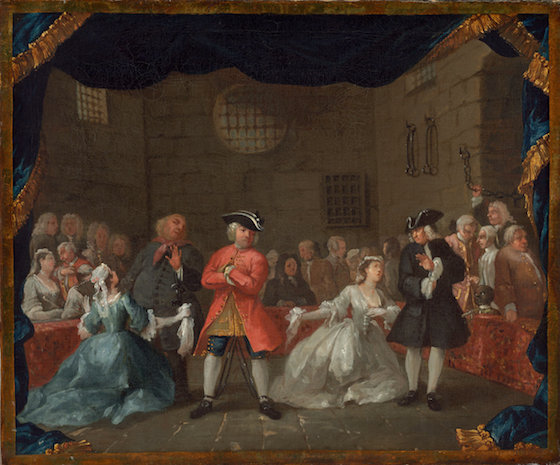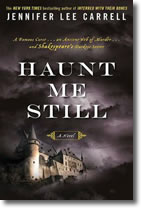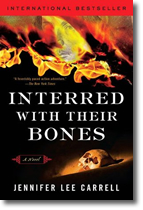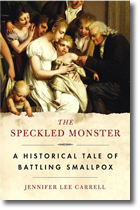William Hogarth, A Scene from The Beggar’s Opera (1728-29)
oil on canvas
Paul Mellon Collection, National Gallery of Art, Washington DC
In July, 1721, six felons under sentence of death in London’s infamous Newgate Prison agreed to serve as guinea pigs in a royally sanctioned inoculation experiment, in return for pardons. To lift these six people to dramatic life, I relied on what particulars I could find in newspapers and other sources, filling out their stories with details typical of Londoners sentenced to death for non-violent crimes in that period.
Since writing the book, I have located the trial records of all six prisoners in the online searchable database of The Proceedings of the Old Bailey (London’s major criminal court):
- The name “Elizabeth Harrison” shows up a number of times in trial records after 1721. Whether or not these refer to the same woman is unclear: both “Elizabeth” and “Harrison” were common names then, as they remain today. I still like to think that “Lizzie” made the most of the rare opportunity handed to her to climb out of the gutter.
- Of all six prisoners, the historical Ann Tompion differs most from the character in my book. As I speculated in my notes, the real Mrs. Tompion seems to have been the famous clockmaker’s niece by marriage, rather than his young widow. Her trial was particularly colorful and — as a record of “justice” — disturbing.
Mary North (originally sentenced to transportation)
- Sentenced to death upon her illegal return to Britain
John Alcock (or Allcock)
John Cawthery (aka Cauthery or Cauthrey)
History may seem still, a solid, reliable mass of fact, but actually it is changing all the time. Not that the present changes the past — but new facts, broadened knowledge, and resifting of those facts in light of different context continually change the stories we tell ourselves about history.








